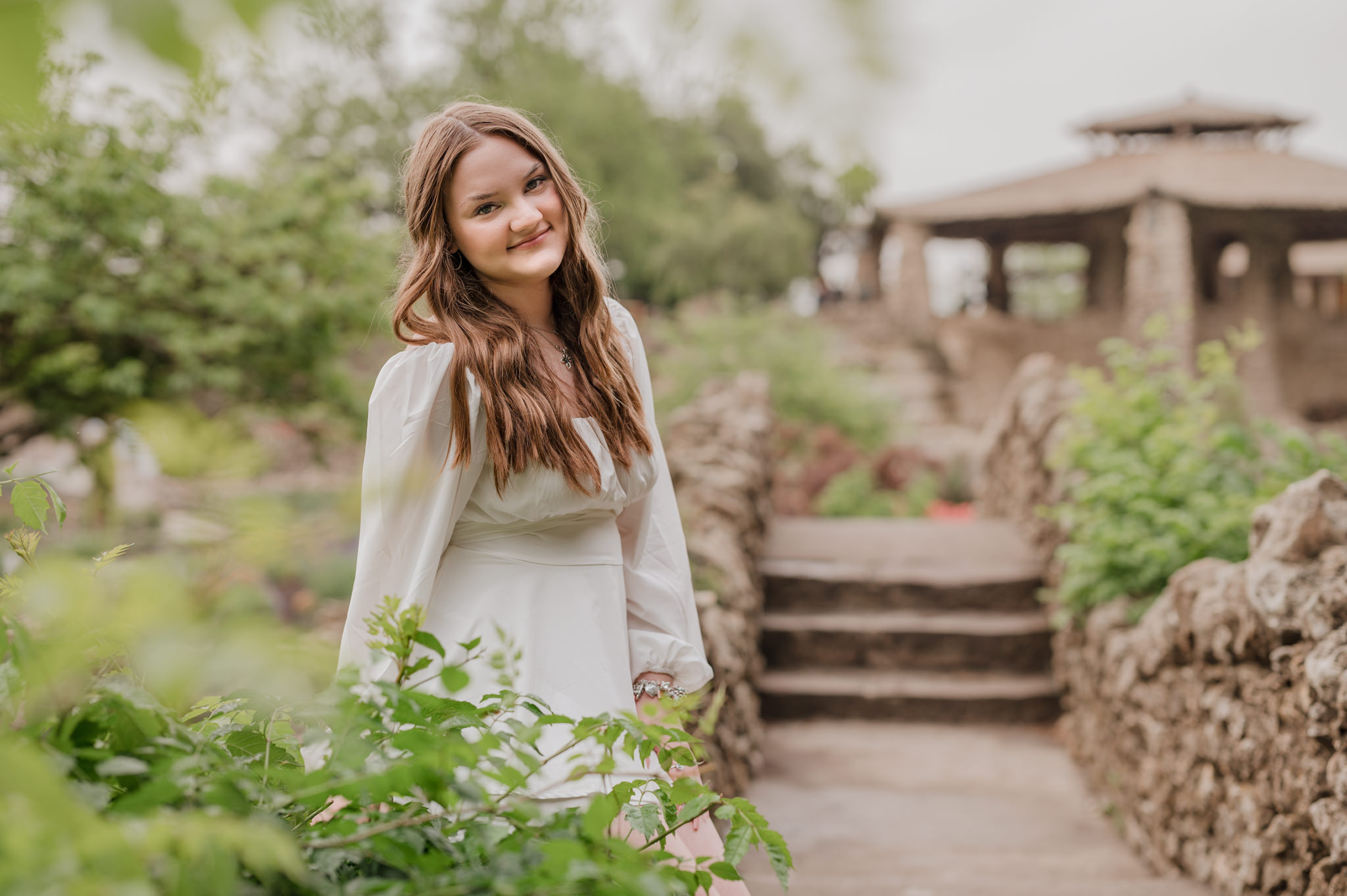As a photographer, I’ve spent a lot of time in some of our city’s prettiest parks. And I’m frequently surprised by the number of families who have never been to many of these spots. So I thought I’d share some info – and beautiful pictures – from some of my favorites. You can find links to more down at the bottom but for today: San Antonio’s Japanese Tea Garden.
3853 N St. Mary’s St,
San Antonio, TX 78212
The Japanese Tea Garden: A jewel hidden in the middle of the city
I love the Japanese Tea Garden! It’s a beautiful little park nestled in the middle of the Brackenridge area. It’s small and won’t take too long to explore, but if you love plants and flowers, you should definitely give it a visit. You can even grab a light lunch or snack and make a morning of it. And of course, it’s a popular picture destination. Even on a cloudy day, it provided a stunning backdrop for this senior picture session!
History of the Japanese Tea Garden
Today the garden is part of the city’s Parks and Recreation Department. But did you know that the garden was originally a cement quarry? Founded in 1880 as the San Antonio Portland Cement Company, it later became known as the Alamo Cement Company. One of the early cement manufacturers in Texas, they mined limestone here for cement production. Eventually the cement company moved on to a new location and abandoned the quarry.
In 1916, a city park commissioner named Ray Lambert had the idea to transform the old quarry into a beautiful Japanese-inspired garden. With a minimal budget, prison labor, and donated bulbs, the lily pond came together for $7,000. A local Japanese-American artist, Kimi Eizo Jingu, was invited to move in and operate the garden. He lived in the park with his family, and they opened the “Bamboo Room” and served food and tea. The Jingu family was displaced from the park during World War II as anti-Japanese sentiments rose. The park became known as the Chinese Tea Gardens for awhile, but in 1984 it was officially renamed the “Japanese Tea Garden.” You can read more about the Jingu family in this article written by one of Kimi Jingu’s daughters.
Features and Design
Ray Lambert designed his project as a Japanese-style garden. It features a koi pond, stone walkways and bridges, a beautiful array of flowers and plants, and even a waterfall. There’s a large stone pavilion and a long tree-lined walkway that leads from the Tea Garden to the Zoo. The garden landscaping looks beautiful all year long – you can enjoy the serene beauty of the Japanese Tea Garden any time.


Activities and Events
You can grab something to eat or drink while visiting the Garden. The Jingu House at the Japanese Tea Garden is now operated by a separate company. As of this writing they are finishing a new kitchen and will reopen for dine-in soon. But in the meantime, you can still shop their grab-and-go menu, where you can find a variety of hot andcold drinks and snacks. They also host a small retail store featuring gifts, books and crafts.
You can book sections of the garden for private events. For a 1-hour time slot between 10-3, you can book the pavilion for $350 and the waterfall area or lower garden area for $225.


Visiting the Japanese Tea Garden
The Japanese Tea Garden is open to the public and free to visit. It is open every day from 7am-5pm, and there is free parking on-site as well. The upper part of the garden and the restaurant are wheelchair accessible, but the lower part of the garden has many areas that are only accessible with stairs.

Photographers, rejoice! While on the Parks and Rec webpage is says photo sessions must be scheduled in advance, the actual webpage for the Garden states that as of now, not photo permit is required for pictures at the garden. However, I’ll warn that this place is really busy on weekends, especially around prom and graduation season.
Are you interested in doing portraits at the Japanese Tea Garden? Head to my website and fill out the contact form and let’s chat!
Check out more beautiful San Antonio parks here:
- Crescent Bend Nature Park: A Peaceful Escape
- Landa Library: Books, Gardens, Playgrounds and More
- Confluence Park: Modern Meets Nature
- Tom Slick Park: A Little-Known Picturesque Backdrop (and lots more) in San Antonio
- Madla Park: A Beautiful Natural Area in Helotes
- Cibolo Creek Nature Center: San Antonio’s Most Picturesque Creek



